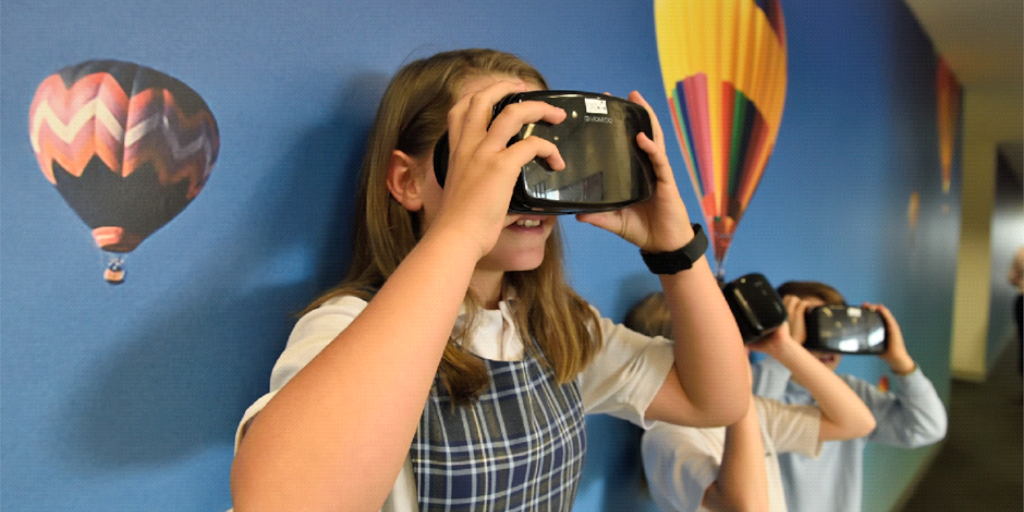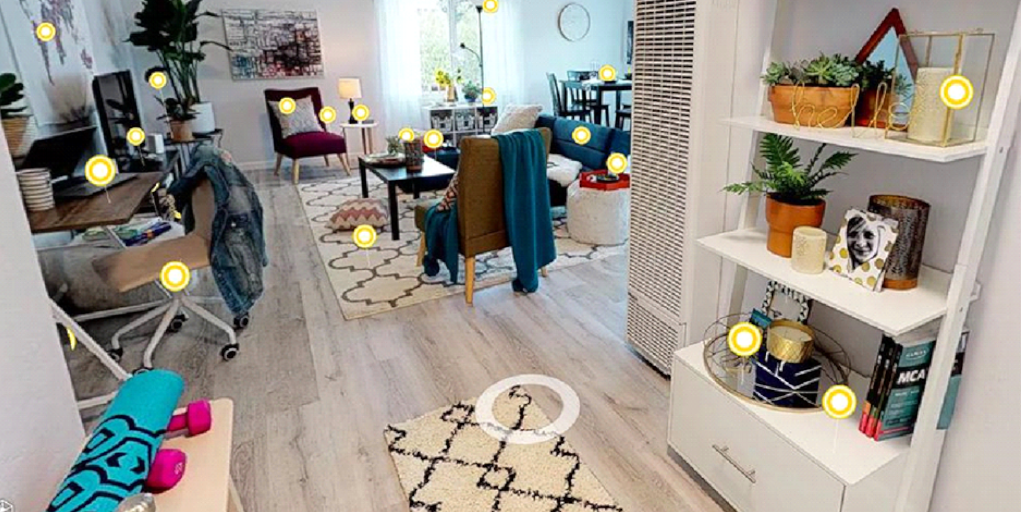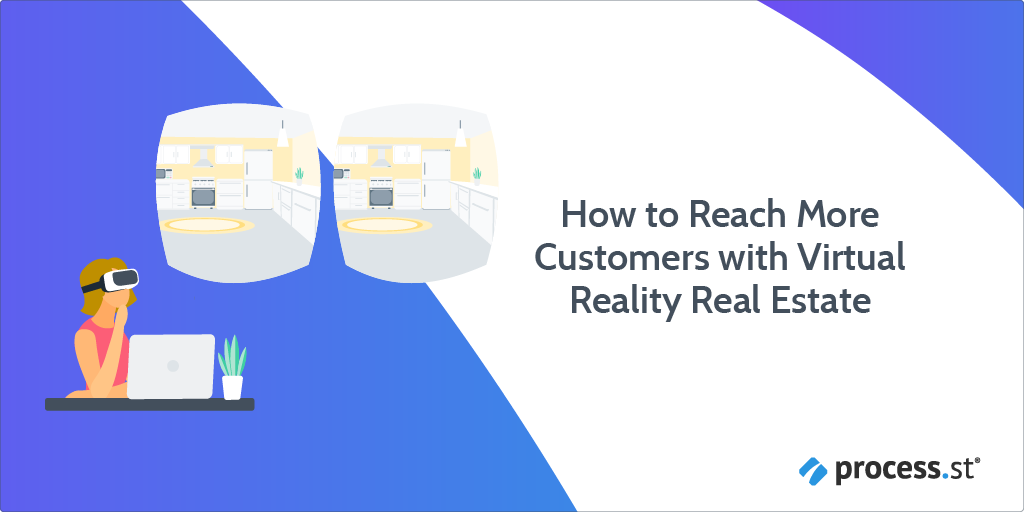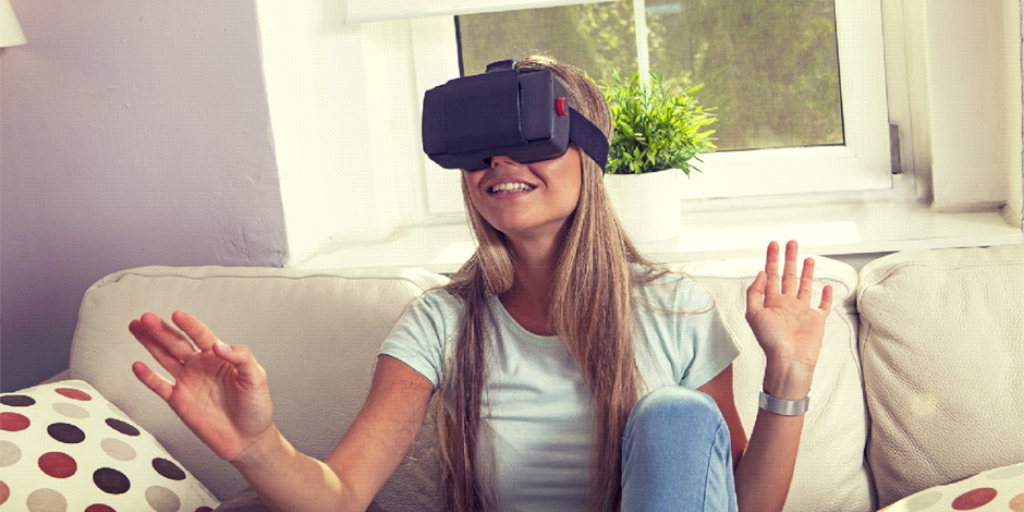This is a guest post by Thornie Longmuir from EssayShark, an on-line academic writing service. Thornie Longmuir is an experienced marketing expert with a deep knowledge of SEO, and over 10 years of experience working within the IT industry. Through his articles, Thornie helps SMEs and entrepreneurs launch their online products or services and teaches them how to promote and sell them. His articles are mainly focused on new and upcoming marketing tools and techniques.
Real estate agents have it tough.
They often work long, anti-social hours, they spend hours driving to and from different locations, they face a lot of rejection, and it can take a long time to become successful.
Virtual Reality (VR) is a new type of technology that can solve these issues.
How?
Let’s find out together by exploring the following topics in this Process Street post:
- What is virtual reality?
- Where did virtual reality come from?
- Virtual reality in real estate
- The benefits of virtual reality real estate
Ready to find out what impact VR is having on the real estate market today?
Let’s go!
What is virtual reality?
Virtual reality (VR) is a form of digital technology that represents an imitation of the real-world environment.
Specialist devices, that are readily available in the marketplace today, give users a complete immersion experience that sends a person from the physical to the imaginary.
In other words, VR technology plays a significant role in creating, working, and entertaining today. It penetrates many spheres of our lives and serves many purposes.
With so many people talking about VR and many companies starting to use it as a useful marketing tool, let’s look at where it takes its roots from.
Where did virtual reality come from?
The virtual reality gadgets that are familiar to us today, have little in common with the original VR concept.
The origins of VR can be traced right back to the 1930s when Edwin Mayer, Harold Graves, and William Gruber invented the ‘View-Master’, a tool that could transform images into stereoscopic.
This was groundbreaking at the time, but it remained an untouchable concept to many, for a number of years.
It became more mainstream in the 80’s when fiction writers, such as Damien Broderick in his 1982 science fiction novel; “The Judas Mandala”, started to write about VR.
But, no matter how long we study where, how, and when virtual reality began, today, it is used to facilitate next-generation experiments.
As we touched on earlier, lots of different people, businesses, and industries are starting to benefit from VR technology for a variety of different reasons.
The real estate market is one industry that has eagerly adopted VR technology and is benefitting hugely from what it can offer.
Virtual reality in real estate
VR affects the real estate business in many ways.
This section will explore this by looking at two key types of virtual reality real estate technology:
- Virtual reality real estate assistants
- Virtual reality real estate tours
Virtual reality real estate assistants: What are they and what can they do?

A virtual reality real estate assistant is an employee who works for a real estate company from an offshore location.
These virtual reality real estate assistants offer today’s estate agents a great opportunity if they follow this particular formula for success:
Time = Money
Let me explain.
Real estate agents face one of the biggest challenges in any profession; Persuading a customer to commit to buying or renting a property.
The decision to buy or rent a house is such a massive commitment, both physically and financially, for people.
So, real estate agents need to spend a lot of time with their prospective clients, getting to know them, finding out what they’re looking for, and searching for the right properties for them.
This should take up the majority of a real estate agent’s time, but often, they find themselves bogged down with necessary but time-consuming tasks, such as paperwork, updating CRM’s, listing new properties, and attracting new clients.
This is where the virtual reality real estate assistant comes in.
A virtual reality real estate assistant can manage all the tasks involved with attracting new clients. For instance, they can call up homeowners and ask if they have a realtor or search for new leads and prospects.
A virtual assistant can also do other, smaller, more menial tasks, like confirming appointments, organizing client lists, managing calendars, listing properties, creating PowerPoint presentations, posting blogs, and updating CRM’s.
In a nutshell, although they work remotely, the virtual assistant’s main job is to free-up the time of the person they are assisting. There are some fantastic articles out there about working with virtual assistants and remote teams, I’ve added a few below for you:
- 9 Signs You Need the Help of A Virtual Assistant
- How to Tighten Up Your Remote Team’s Feedback Loop
- How to Hire a Bookkeeper, CPA, Controller, and Virtual CFO
- Build, Grow and Manage a Virtual Team to Help Run An Entrepreneurial Empire
- How to manage growing a team in-office and virtually
More and more businesses are turning to virtual reality real estate assistants. In a competitive world, hiring staff from anywhere in the world makes sense. Not only can local staff be expensive, but they often don’t like getting stuck in bureaucratic tasks.
A real estate agent can employ a virtual assistant to take care of those time-consuming admin tasks and focus on the more important things, like building relationships with customers, selling houses, and signing rental leases.
However, if hiring a virtual assistant is not for you, you could use other real estate software, such as the HomeSnap Real Estate & Rentals app. This type of app will help you to keep all the homes you’ve discussed in one place. All conversations that relate to each property deal will appear on the listing page and you can message other agents directly through HomeSnap.
Or, to help you stay organized, you could use business process management (BPM) software, like Process Street, to help you manage your recurring tasks.
Who is Process Street?
Process Street is super-powered checklists.
We are a super-charged, state of the art BPM SaaS platform which allows you to create templates and run individual checklists.
You can check tasks off as you work through them, set deadlines, request approval, assign tasks, and track your team’s progress.
Watch this video to get a better idea about who we are and what we do:
So, you could run a checklist like this Real Estate Sales Process Checklist every time you start the sales process, to make sure no key details or opportunities are missed, and the deal runs smoothly:
Or, how about this Real Estate Listing Checklist:
With this checklist, you will be guided through every important step in getting a house on the market.
To get these checklists, log in and add them to your checklist dashboard. Or, if you’re not yet a member of Process Street, start your free trial here.
If these checklists aren’t quite right for what you need, you can customize them.
Use these super-powered features to help you create templates that you can use time and time again to make recurring work fun, fast, and faultless.
- Stop tasks
- Dynamic due dates
- Task permissions
- Conditional logic
- Approval tasks
- Embed widget
- Role assignments
Even better, you can also connect to thousands of apps via Zapier, webhooks, or API connection to automate your workflows.
Speaking of automation, check out this Process Street webinar, it’ll give you some handy tips on how to speed up your everyday tasks and get more deals done.
Which brings me back to virtual reality!
Another way that VR can help real estate agents, and their customers, is through VR tours.
Virtual reality real estate tours: What are they and what can they do?
The two main types of virtual reality real estate tours are; the 360-degree virtual tour and the 3D virtual tour.
Let’s explore them both.
The 360-degree virtual tour
A 360-degree virtual tour consists of a series of panoramic images that give visitors the ability to see what it would be like to stand, walk, and even turn around in a room.
To make a 360-degree virtual tour, estate agents will need a special camera that they can set-up in the center of a room or area.
After the camera is configured, it can then be rotated, manually or automatically, to take a series of panoramic photos of the room.
Once the panoramic photos have been taken, the estate agent can then upload each photo to a specialized program or piece of software, which will enable them to add in interactive elements.
Although the 360-degree virtual tours are expensive to make and can take hours to shoot, it’s an incredibly efficient way to show customers a property.

Because no one needs to travel anywhere to view the property, if the house isn’t right for the viewer, the real estate agent and the viewer have lost two minutes of their time, not two hours!
Although a clearly brilliant tool, because the 360 tours are simply made from a series of static images, it can be clunky to watch.
Unlike the 3D virtual tour.
The 3D virtual tour
To create a 3D virtual tour, the real estate agent will first take a number of static photos of the property’s exterior and interior. Once they’ve done that, they will then stitch these photos together using a specialized piece of software to create a realistic walk-through video.
A 3D virtual tour will allow the viewer to walk around and view the property as if they were really there.
It’s easy to make and perfect if you need to make a quick but effective post about a property.

The best way to start creating 3D tours is to use the free app Zillow 3D Tour. It is an excellent tool for creating this type of tour by yourself.
Achieve the effect of full presence by placing a camera throughout the house and shoot a setting from multiple positions.
Both types of VR tour allow real estate customers to visit properties, virtually, any time they want, and for as long as they want.
Any real estate agent can take photos for either a 360 virtual tour or a 3D tour if they have the right high-dimension camera and the right software.
While both 3D and 360-degree virtual tours are great for managing properties and showcasing the features of a property, 3D tours are slightly less expensive to make, easier to create, and seem to offer a smoother viewing experience.
We’ve covered the types of virtual reality that real estate agents can use, now let’s look at the benefits virtual reality can bring to the real estate market.
The benefits of virtual reality real estate
Virtual reality is fast becoming a part of day-to-day life for many people, organizations, and industries.
As we’ve discussed, one industry that’s reaping the benefits of VR technology is the real estate market. Take luxury real estate dealer Sotheby for instance.
They create 3D virtual walk-through tours specifically for Android and iOS devices.
Through VR headsets, their customers are able to immerse themselves in virtual environments and examine their future homes in detail, in real-time. They can even interact with objects to see how they would work and are also accompanied by a virtual guide.
So that’s an example of how the real estate market is using VR, let’s look at the benefits VR brings to the table.
Virtual reality real estate benefit #1: VR saves time
Usually, real estate customers need to visit multiple properties before choosing the one they want.
If a customer is relocating to another part of the country, viewing properties can take up a lot of time. Not only that, but it can take a lot of organizing and can be incredibly costly, especially if flights and overnight accommodation are necessary.
Viewing properties via a virtual reality tour can save them time, money, and stress. In minutes, from the comfort of their own sofa, potential renters or buyers can virtually visit dozens of locations and decide which they want to see in real life.
VR tours save time for real estate agents as well. They don’t need to travel back and forth to show the same property to a number of different customers, they can give them a virtual tour instead. They don’t need to spend time physically investigating new properties for suitability, they can pop on a VR headset and have a good look round.
However, it’s not only VR tours that can save agents time. Hiring a virtual reality real estate assistant may seem like an extravagant way to take care of the tedious paperwork, but it frees up time for focusing on the important stuff; Customers.
Put it this way; if a virtual reality real estate assistant manages to find a minimum of one deal per year, they will have paid for themselves.
Virtual reality real estate benefit #2: VR reduces business costs
Although developing VR tours may seem expensive, the traditional investments in real estate marketing are way bigger.
Making a VR tour may incur a high start-up cost, but it soon becomes a financially profitable investment. Using the power of computer graphics and 360-degree video, real estate agents can make countless guided video tours around numerous properties with just a panoramic camera and basic rendering.
Virtual reality real estate benefit #3: VR increases customer engagement
VR tours are a great way to gain a client’s trust. A customer who visits a real estate agent’s website and sees they offer state-of-the-art VR tours are more likely to become engaged with that brand because it shows their services professionally.
These VR tours help clients get all the information they need about properties before contacting agents and asking to arrange real-life visits to view the houses or apartments they liked most.
Virtual reality real estate benefit #4: VR helps to reach more clients
Each real estate customer, looking to buy or rent a property, needs a lot of time and attention. After all, property is a big commitment.
A real estate agent is responsible for showing their customers numerous suitable properties, arranging visits that fit their schedule, and negotiating a good price and terms.
All of these tasks are incredibly overwhelming. Therefore, the average realtor can only work with a small number of clients.
Virtual reality is changing this.
Agents who use virtual tours are more productive. It doesn’t matter where their clients live, VR helps showcase properties even to long-distance customers. This means agents can process more clients’ applications and work with more potential buyers.
So, we know what VR is, where it came from, how it’s used in real estate, and the benefits it brings to real estate agents and their customers.
Considering virtual reality technology is still in the early stages of development, this new marketing tool is proving to be trendy.
Why?
Let’s look at it from a real estate customer’s point of view. Imagine you’re living in New York, but are dreaming about a house in Rome.
To make your dream come true, you’d have to take time off work, find an Italian (English-speaking!) estate agent, fly all the way to Italy, and spend lots of time and money just to view the house.
Not anymore!
VR gives you many more safe and transparent opportunities to see the house without moving or muscle or spending a penny.
Once you’ve taken the VR tour, you can weigh up the property pros and cons, find the right agent, discuss the details, and make a remote deal.
You can choose your Dolce Casa without any risk, with the help of VR technology.
Don’t underestimate the significant role of VR in the development of the real estate market.
Use any available VR tool to make the buying, selling, and renting process joyful and highly proficient!
We’d love to hear how you use virtual reality in your business in the comments below. Who knows? Like Thornie, you may even get featured in an upcoming article!









Amanda Greenwood
Amanda is a content writer for Process Street. Her main mission in life is to write content that makes business processes fun, interesting, and easy to understand. Her background is in marketing and project management, so she has a wealth of experience to draw from, which adds a touch of reality and a whole heap of depth to the content she writes.